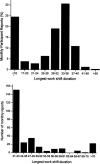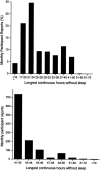The Gordon Wilson Lecture: work hours, sleep and patient safety in residency training
- PMID: 18528472
- PMCID: PMC1500922
The Gordon Wilson Lecture: work hours, sleep and patient safety in residency training
Figures











References
-
- Lockley SW, Cronin JW, Evans EE, et al. fect of reducing interns’ weekly work hours on sleep and attentional failures. N Engl J Med. 2004;351:1829–1837. - PubMed
-
- Jewett ME. Models of circadian and homeostatic regulation of human performance and alertness. Harvard University. 1997
-
- Jewett ME, Borbély AA, Czeisler CA. oceedings of the workshop on biomathematical models of circadian rhythmicity, sleep regulations, and neurobehavioral function in humans. J Biol Rhythms. 1999;14:429–630. - PubMed
-
- Johnson MP, Duffy JF, Dijk DJ, Ronda JM, Dyal CM, Czeisler CA. hort-term memory, alertness and performance: A reappraisal of their relationship to body temperature. J Sleep Res. 1992;1:24–29. - PubMed
-
- Czeisler CA, Khalsa SBS. The human circadian timing system and sleep-wake regulation. In: Kryger MH, Roth T, Dement WC, editors. Principles and Practice of Sleep Medicine. Philadelphia: W.B. Saunders Company; 2000. pp. 353–374.
Publication types
MeSH terms
Grants and funding
LinkOut - more resources
Full Text Sources
